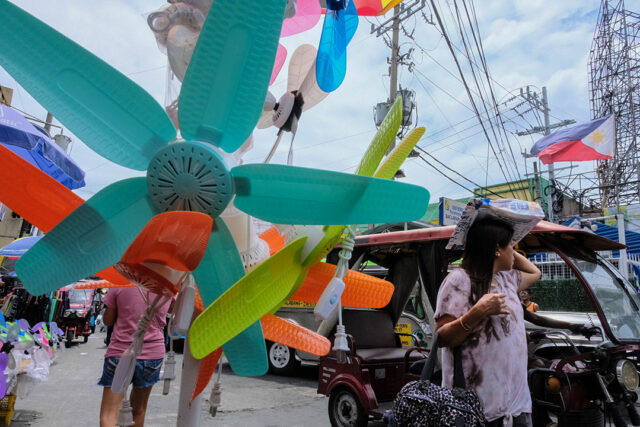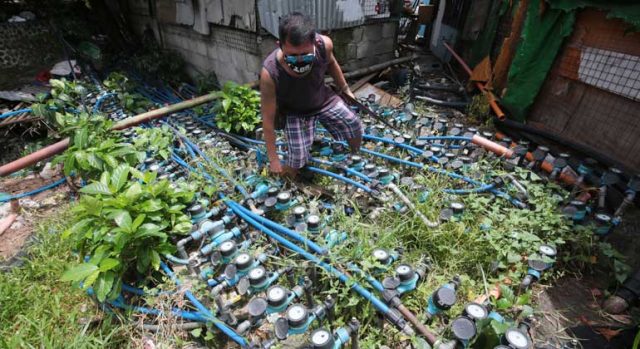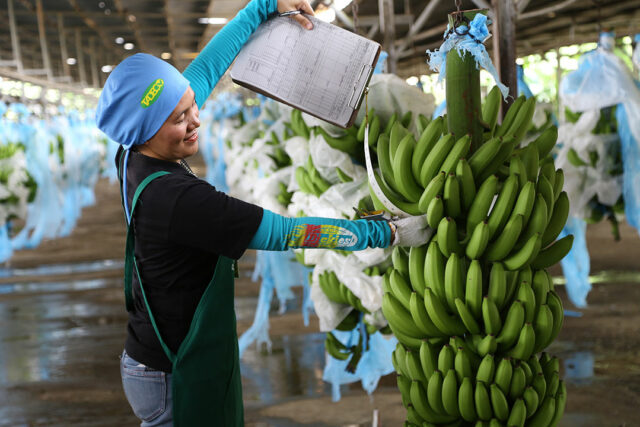Analysts see room for rate cut delay

By Luisa Maria Jacinta C. Jocson, Reporter
THE Bangko Sentral ng Pilipinas (BSP) still has room to delay monetary easing, analysts said, noting the Philippine economy can still withstand “higher-for-longer” interest rates.
“The economy is strong enough to withstand the current policy rate of the BSP at 6.5%. It would be useful if we see the banks doing less pro-cyclical lending operations to help avoid a convergence between the business and financial cycles as well as lower credit and economic growth,” GlobalSource country analyst Diwa C. Guinigundo said in a Viber message.
The Monetary Board on Monday stood pat for a fourth straight meeting, keeping its benchmark rate at a near 17-year high 6.5%.
BSP Governor Eli M. Remolona, Jr. has said that upside risks to inflation have “become worse,” prompting the central bank to be “somewhat more hawkish than before.”
Rate cuts would only be considered if inflation continues on the downtrend and if economic growth turns out weaker than expected, he added.
HSBC economist for ASEAN Aris D. Dacanay in a report said that the BSP has room to keep its policy rate tighter for longer.
“With growth in the Philippines very resilient, the BSP, in our view, can afford to delay its first rate cut if it needs to support the peso or to cool inflation further,” he said.
The BSP chief said that it could potentially cut rates by 25 basis points (bps) in the third quarter if inflation is within target and economic growth is weak. However, he warned that monetary easing could start as late as the first quarter of 2025 if inflation risks persist.
“I am for the BSP’s sustained patience because we have seen in the past how high inflation could also subvert economic growth through lower consumption and investment, and undermine purchasing power especially of the bottom 30% of our population,” Mr. Guinigundo said.
Mr. Remolona also said that previous rate increases have weighed on domestic demand and have a lagged effect on the economy.
The Philippines’ gross domestic product (GDP) settled at 5.5% last year, slower than the 7.6% expansion in 2022 and falling short of the government’s 6-7% target.
Mr. Remolona said that GDP growth may average 5.9% this year, a tad lower than the government’s revised 6-7% target for 2024.
“While growth is threatened, the policy does not necessarily have to limit growth. The critical factor is how both private and public sectors will respond to the policy,” Ateneo de Manila economics professor Leonardo A. Lanzona said in an e-mail.
“In a way, the BSP is disciplining the government to use whatever resources it has more productively so that it pushes the economy towards greater output, not just in agriculture but all other sectors,” he added.
Mr. Lanzona said controlling inflationary expectations “stifles aggregate demand, forcing both private and public expenditures to remain low.”
CRUCIAL Q1 GDP DATA
Makoto Tsuchiya, economist from Oxford Economics, said that the results of first-quarter GDP data will be crucial to the BSP’s decision whether to extend its pause or not.
“If domestic demand holds up well or the country’s electronics sector benefits from the AI chip boom more than we expect, this will give BSP room to remain patient until the third quarter to start the rate cutting cycle,” he said in a commentary.
First-quarter GDP data is set to be released on May 9.
Pantheon Macroeconomics said there is a potential for rate cuts even before the third quarter amid expected weaker growth.
“(Mr. Remolona) also suggested that activity would have to disappoint markedly for any pre-third quarter cuts to enter the fray. Needless to say, we think such a downside surprise is inevitable, with our 2024 growth forecast at 4.6%,” it said in its Emerging Asia Economic Monitor.
“Domestic demand is still weakening year over year, and momentum has been non-existent at best since the start of 2024,” it added.
Jonathan L. Ravelas, senior adviser at professional service firm Reyes Tacandong & Co., said there may be a chance the BSP will not cut at all this year amid persistent inflation.
“With upside risks to inflation remaining, likely the BSP will keep rates higher for a bit longer. I am looking at best two cuts this year. But if inflation remains sticky on El Niño concerns, I would not be surprised if the BSP will not cut at all,” he added.
The BSP raised its risk-adjusted and baseline inflation forecasts this year to 4% and 3.8%, respectively, from 3.9% and 3.6% earlier.
Mr. Guinigundo said it may be too soon for the BSP to begin cutting rates by the third quarter.
“We are not surprised, as we have written before, cutting rates is too early by June, while a reduction in the third quarter might even be optimistic given all the red flags we continue to see today,” he said.
“Given upside domestic inflation risks as well as chances that the US Fed might delay its easing cycle, the risk for BSP is tilted to a later start of the rate cuts,” Mr. Tsuchiya added.
Bank of America Global Research said inflation may average above 4% in the second quarter, which could prevent it from cutting rates in June.
“We now think the BSP will cut its policy rate no sooner than August 2024 and cut further in October and December, totaling 75 bps,” it said in a report.
ANZ Research said it expects the central bank to adopt a wait-and-see approach until economic data “turns favorable for a rate cut.”
“Consumption credit continues to grow at a double-digit pace, which shows the resilience of the Filipino households despite the sharp rise in interest rates,” it added.
Mr. Dacanay said inflation may breach the central bank’s 2-4% target until August this year before returning to target, which would then give it the chance to loosen monetary reins.
“Our base case scenario is for the BSP to cut rates by 25 bps to 6.25% in the third quarter of 2024, and then by 50 bps to 5.75% in the fourth quarter of 2024,” he added.



 The US, Japan, Australia and the Philippines last year started a quadrilateral security dialogue in the face of an aggressive China, which claims the South China Sea almost in its entirety.
The US, Japan, Australia and the Philippines last year started a quadrilateral security dialogue in the face of an aggressive China, which claims the South China Sea almost in its entirety.







